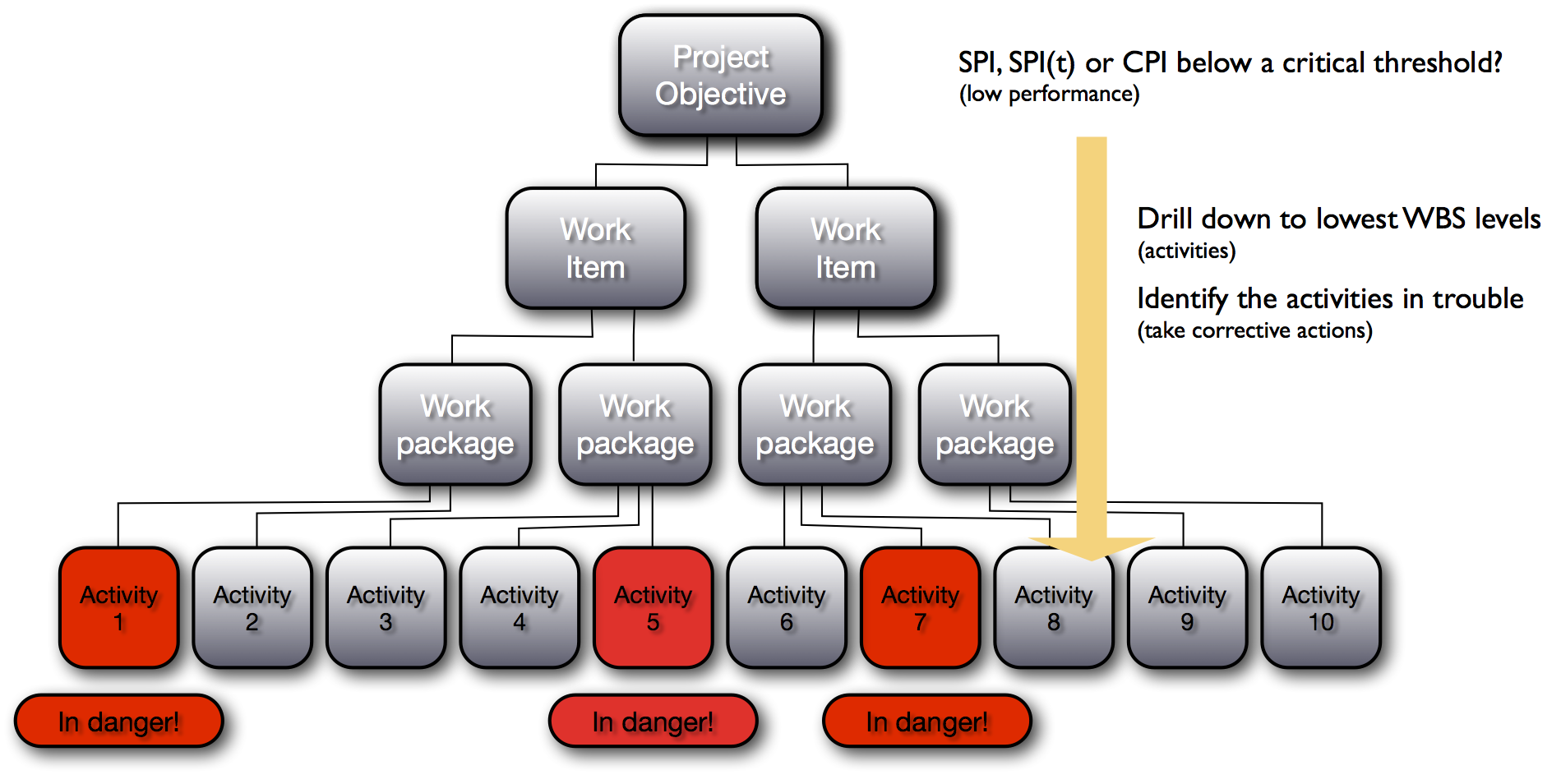Top-down project control: Setting action thresholds using earned value management
Submitted by Mario Vanhoucke on Fri, 12/30/2011 - 10:00


Measuring and controlling the performance of a project in progress is key to the success or failure of a project. It requires a set of metrics to measure the current progress and to forecast the future expected project behavior such that the project manager is able to timely detect project problems and take corrective actions to bring the project back on track.
Earned Value Management (EVM) provides such performance measures at periodic time periods to compare the initial baseline schedule with the current project performance. It is based on three key metrics and simple formulas and provides the project manager with a set of measures that act as an early warning signal to detect project problems in an early stage. More information on these EVM performance measures can be found in “Earned Value Management: An overview”. In this article, the following three topics will be briefly explained:
- Earned value management: Controlling the performance of projects in progress
- Action threshold(s): Interpretation of the performance measures as early warnings for action
- Top-down project control: A project control approach
Earned value management
Earned value management is a project control technique to measure the performance of projects in progress using three key metrics. The key metrics are used to measure the (time and cost) performance at the current moment in time where the project manager is right in the middle of the project progress and still has room to take corrective actions in case the project is in trouble. The current project performance can be evaluated by the following performance measures: two versions of the schedule performance index (SPI or SPI(t)) to measure the current time performance and the cost performance index (CPI) to measure the current cost performance. In the remainder of this article, the performance of a project in progress over time will be measured on fictitious project data with a duration of 11 weeks using a performance measure that reports the value 1 if the project is on schedule (SPI or SPI(t)) or on cost (CPI). More information on these EVM performance measures can be found in “Earned Value Management: Measuring a project’s performance”.
Setting action thresholds
The EVM performance measures that are periodically reported to the project manager must act as early warning signals to timely detect project problems and to trigger actions in case the project performance runs out of control. Consequently, they provide the project manager with useful information of the overall project performance at a certain moment in time, but they do not provide detailed information about the performance of the individual project activities. Figure 1 illustrates the project performance over time (week 1 to 11) and the action threshold set by the project manager. This action threshold defines the intensity of control and is shown by the increasing dotted line on the figure. When the project performance measure drops below the action threshold at a certain moment, it is assumed that the current performance is too far away from the initial expectations which might put the overall project success in danger. Consequently, the project performance behavior at weeks 7 and 8 must act as a trigger to take corrective actions in order to bring the project performance back on track.

?Figure 1: Action threshold setting to distinguish between risky and non-risky activities
Top-down project control
Figure 2 displays a work breakdown structure (WBS) of the example project which splits the project objective into smaller pieces. It graphically illustrates the top-down control approach where project based performance measures give an indication of the current performance that act as a trigger to drill down to the lowest WBS levels to find out where the problems really are. In the example figure, activities 1, 5 and 7 are assumed to be the activities in progress with problems that require corrective action by the project manager to bring the overall project performance back on track.
Figure ?2: Top-down project control using earned value management
Research studies have shown that the top-down project based control approach using schedule and cost performance metrics obtained by using earned value management is particularly useful when projects contain a lot of serial activities. More information can be found in the article “Why project control works so well for some projects and fails so miserably for others”.
© OR-AS. PM Knowledge Center is made by OR-AS bvba | Contact us at info@or-as.be | Visit us at www.or-as.be | Follow us at @ORASTalks


